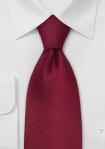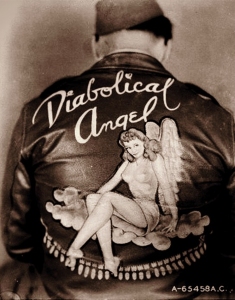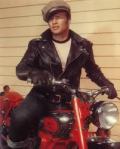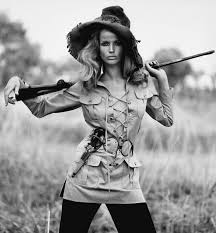Song post: Sheppard, Bombs Away
Camouflage is an attempt to blend in order to hide or not be seen not unlike a chameleon in its environment. In today’s fashion world, it can be seen on the streets represented by vintage camo jackets, print tees, leggings and slacks found in major retailers and redefined by major designers for the runways, but it had its birth in the French military in World War I.
Military fashion has influenced mainstream style ‘as long as people have donned clothes to be fashionable—and even before that.’ In Jennifer Croll’s book, Fashion that Changed the World, clothing affects battle performance. Consequently, the military has been ‘invested’ in producing innovative and ingenious developments in battle apparel that has seeped into mainstream fashion design.
 Some interesting crossover battle garb and civilian attire started with the Thirty Years War that ravaged most of Europe between 1618 and 1648. Croatian mercenaries reporting for duty in Paris wore tightly knotted scarves around their necks. This led to the Parisian style of a looser-tied scarf called ‘la cravate’ or cravat,
Some interesting crossover battle garb and civilian attire started with the Thirty Years War that ravaged most of Europe between 1618 and 1648. Croatian mercenaries reporting for duty in Paris wore tightly knotted scarves around their necks. This led to the Parisian style of a looser-tied scarf called ‘la cravate’ or cravat,  which eventually led to the tie.
which eventually led to the tie.
The Crimean War (1853-1856) often labeled the ‘first modern war,’ pitted the Russian army against British, French, Sardinian, and Ottoman troops. The extreme weather conditions led to an innovative warm wool jacket with a collar. It was named the cardigan after the Earl of Cardigan who led the Charge of the Light Brigade at the Battle of Balaclava. This led to another weather beater born from the Crimean war, a knit hat with holes for eyes and mouth, the balaclava, and better known today as a ski accessory (or as an innovative disguise when robbing banks).
One of the military fashions I found most surprising was the Burberry trench coat. 
Known originally for manufacturing weather-resistant clothing for explorers of Antarctica, Amundsen and Shackleton, Burberry’s ‘key invention’ was the tightly woven and weather-resistant ‘gabardine.’ This fabric performed well in harsh climates. World War I trenches were often muddy, wet and cold. Burberry’s long belted, waterproof coat was ideal for the trenches and so useful that post war it found its way into popular fashion.
 World War II brought the bomber jacket and T-shirt to consumer wear through the American film stars Marlon Brando and James Dean. Military inspired clothing for women with ‘broad shoulders and epaulettes’ became popular due to wartime rationing. ‘Neatly tailored attire took up less fabric
World War II brought the bomber jacket and T-shirt to consumer wear through the American film stars Marlon Brando and James Dean. Military inspired clothing for women with ‘broad shoulders and epaulettes’ became popular due to wartime rationing. ‘Neatly tailored attire took up less fabric  than voluminous dresses.’ In Europe, many couturiers shut down. Some designers were associated with the Nazi party such as Coco Chanel who was reported to be the mistress of German intelligence officer, Von Dincklage. Hugo Boss became a member of the Nazi party and created the German army’s uniform, using forced labor. This fact surfaced in 1997 to public outrage and HB’s settlement made to survivors in 2001.
than voluminous dresses.’ In Europe, many couturiers shut down. Some designers were associated with the Nazi party such as Coco Chanel who was reported to be the mistress of German intelligence officer, Von Dincklage. Hugo Boss became a member of the Nazi party and created the German army’s uniform, using forced labor. This fact surfaced in 1997 to public outrage and HB’s settlement made to survivors in 2001.
 The Cold War between the Soviet Union and the United States led to ‘space race’ clothing in the futuristic designs of Courrèges, Cardin, Ungaro, and Rabanne. The Vietnam War became the fashion statement of the ‘pro-peace hippie movement.’ With revolutionary heroes like Che Guevara and Fidel Castro seen as heroes, the hippies donned military surplus clothing for anti-war protests. Designer Yves Saint Laurent copied this trend and sparked controversy when French
The Cold War between the Soviet Union and the United States led to ‘space race’ clothing in the futuristic designs of Courrèges, Cardin, Ungaro, and Rabanne. The Vietnam War became the fashion statement of the ‘pro-peace hippie movement.’ With revolutionary heroes like Che Guevara and Fidel Castro seen as heroes, the hippies donned military surplus clothing for anti-war protests. Designer Yves Saint Laurent copied this trend and sparked controversy when French Vogue featured the model Veruschka in his safari jacket with a gun slung over her shoulder.
Vogue featured the model Veruschka in his safari jacket with a gun slung over her shoulder.
After 9/11 fashion magazines and designer brands ‘rushed to eliminate violent imagery, collections with ominous names, or references to anything dark and threatening.’ Military fashions today are experiencing a comeback and Croll states it’s most prevalent in the resurgence of Camouflage. The designer Van Noten has claimed he wants to ‘demilitarize’ camo, but Croll 
believes it will prove difficult considering its history.
I like most kinds of military-style clothing and have more than a few pieces in my closet (other than the cravat (too confining and a bit outdated) and the balaclava (it really messes up your hair and being a short woman, it wouldn’t help me much in a crime spree because most bank security could outrun me.) So, I’m going to go brush the dust off my 80’s bomber jacket and dig for my camo bag. Come fall, I’ll be stylin’. 

What do you think of the idea that ties came from riding shirts, which had detachable strips useful for binding wounds? Love the idea of hauling out my safari jacket!
LikeLike
It’s a definite possibility. Certainly the soldiers used their scarves for a variety of reasons, and detachable strips would be another alternative or perhaps a further innovation that progressed with time.
LikeLike